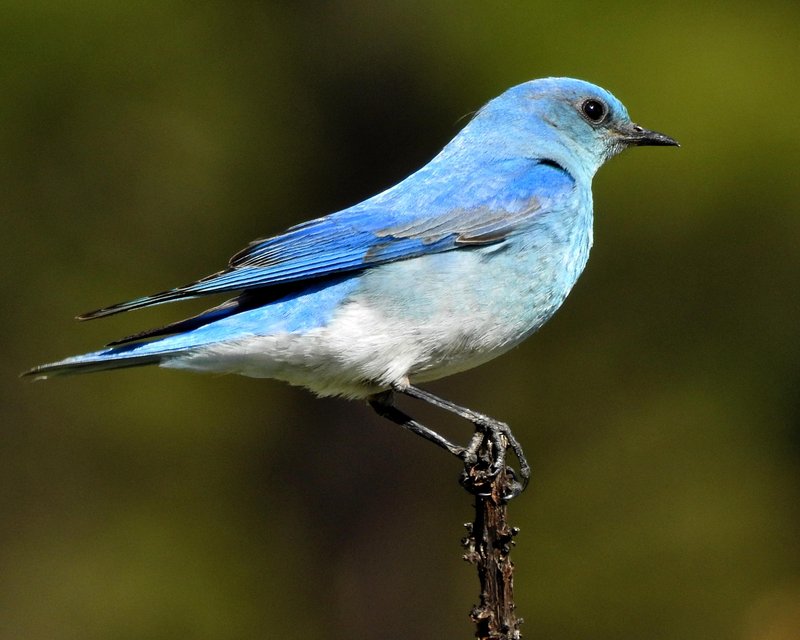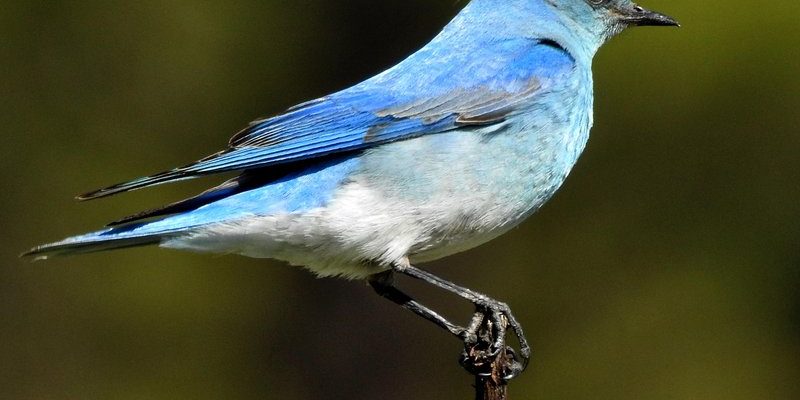
The Mountain Bluebird is a stunning bird that captivates the hearts of many with its vibrant blue plumage. Imagine a splash of bright blue against the backdrop of a green landscape or a clear sky. This little beauty is not just a pretty face; it plays a vital role in its ecosystem. The Mountain Bluebird is often associated with open spaces, particularly in western North America, where it can be found spreading its wings in fields, meadows, and mountain slopes.
You might be wondering what makes the Mountain Bluebird so special. For starters, it’s recognized for its striking appearance, which makes it a favorite among birdwatchers. But beyond its good looks, this bird has fascinating behaviors and habits that contribute to its survival. So, let’s dive in and explore everything you need to know about the Mountain Bluebird, from its diet to its nesting habits, and why it’s so important to our environment.
Appearance
When you first lay eyes on a Mountain Bluebird, the vibrant blue feathers instantly catch your attention. The males are particularly striking with their bright blue bodies that almost shimmer in the sunlight. They have a delicate, slender build, measuring around 7 to 8 inches in length. Females, on the other hand, sport a more subdued palette with grayish-brown hues, which can make them a bit harder to spot. This difference in coloring is common in many bird species and serves various purposes, including camouflage.
Another remarkable feature of the Mountain Bluebird is its beak, which is short and straight—ideal for catching insects. Their wings are long and pointed, giving them the ability to soar gracefully as they search for food. During the mating season, the males often engage in displays to attract females; these include puffing out their chests and performing aerial acrobatics. It’s a sight that showcases not only their beauty but also their vitality.
Habitat
The Mountain Bluebird thrives in open habitats, particularly in areas with sparse vegetation. You’ll often find them in high-altitude meadows, grasslands, and even along the edges of forests. This preference for open spaces is crucial as it gives them plenty of room to hunt for insects, their primary food source. They are typically found in western regions of North America, including parts of Canada, the United States, and northern Mexico.
Interestingly, during the winter months, these birds migrate to lower elevations, seeking milder climates. This seasonal movement means they adapt to varying environments, from the chilly heights of the Rocky Mountains to the more temperate regions of the plains. Whether you spot them perched on a fence post or darting through the air, their presence is a sure sign of the healthy ecosystems they inhabit.
Diet
The diet of a Mountain Bluebird is primarily composed of insects, making them excellent natural pest controllers. They feast on grasshoppers, beetles, and various other insects, especially during the breeding season when they need to provide high-protein meals for their young. In addition to insects, they also enjoy berries and fruits, particularly in the fall. This diverse diet allows them to thrive in various habitats and seasons.
When hunting for food, these birds exhibit fascinating behaviors. They often hunt from a high perch, scanning the ground for movement. Once they spot their prey, they swoop down with impressive speed, showcasing their agility. This hunting style not only makes them adept at catching food but also highlights their importance in the ecosystem as they help control insect populations.
Nesting Habits
Nesting is an essential part of the Mountain Bluebird’s life cycle. They prefer to nest in tree cavities or abandoned burrows, often selecting sites that provide good cover from predators. The female typically lays between four to six eggs, which she incubates for about two weeks. Both parents participate in raising the chicks once they hatch, bringing them food and protecting them as they learn to fly.
The nest itself is often lined with soft materials like grass and feathers, creating a cozy environment for the young birds. Watching the chicks grow and eventually fledge is a heartwarming experience for many bird lovers. The entire process can take about three weeks from hatching to leaving the nest. Once fledged, the young Mountain Bluebirds continue to rely on their parents for food while they perfect their flying techniques.
Conservation Status
The Mountain Bluebird is currently classified as a species of “Least Concern” by the International Union for Conservation of Nature (IUCN). This status indicates that, while they face threats from habitat loss and climate change, their populations are holding steady. However, it’s vital to continue monitoring their habitats and advocate for conservation efforts to ensure they thrive for future generations.
Human activities, such as agriculture and urban development, can greatly impact their habitat. Preserving open spaces and creating more wildlife-friendly environments can help support their populations. As nature enthusiasts, we can play an important role in spreading awareness and participating in local conservation projects that benefit the Mountain Bluebird and other wildlife.
Interesting Facts
| Scientific Name: | Sialia currucoides |
| Size: | 7-8 inches long |
| Wingspan: | 12-15 inches |
| Diet: | Insects and fruits |
| Lifespan: | 2-5 years in the wild |
| Nesting: | Tree cavities and abandoned burrows |
| Migration: | Seasonal migrations to lower elevations in winter |
FAQ
What is the Mountain Bluebird’s range?
The Mountain Bluebird primarily inhabits western North America, ranging from parts of Canada down through the United States and into northern Mexico. They are often seen in open country, grasslands, and even in mountainous regions, making them a common sight in the western U.S.
How can I attract Mountain Bluebirds to my yard?
To attract Mountain Bluebirds, consider providing bird feeders stocked with mealworms or berries, as these are part of their diet. You might also want to create an inviting habitat with open spaces and natural perches like trees or poles. If you’re lucky, they might stop by for a visit!
Are Mountain Bluebirds good to have around?
Absolutely! Mountain Bluebirds are excellent for controlling insect populations, as they primarily feed on various insects. Their presence can help maintain balance in the ecosystem, making them beneficial for gardens and agricultural areas.
What do Mountain Bluebirds do in the winter?
During winter, Mountain Bluebirds migrate to lower elevations where they can find milder temperatures. They often gather in flocks, seeking out areas with abundant food sources like berries and seeds, which are essential for their survival during the colder months.
How do Mountain Bluebirds communicate?
Mountain Bluebirds communicate through a series of soft calls and songs. Males are particularly vocal during the mating season, using calls to establish territory and attract females. Their songs are often described as melodious and sweet, adding a lovely soundtrack to their natural habitats.
What predators do Mountain Bluebirds face?
Mountain Bluebirds face various natural predators, including hawks, snakes, and even larger birds. Due to their nesting habits, they also need to be cautious of mammals that might invade their nests. Their bright colors can make them targets, but their quick movements help them escape danger.
What time of year do Mountain Bluebirds breed?
Mountain Bluebirds typically begin their breeding season in late April to early June. During this time, males display their bright plumage and engage in courtship flights to attract females. Once paired, they work together to build nests and raise their young.
Can Mountain Bluebirds be kept as pets?
While Mountain Bluebirds are beautiful, they are wild birds and are not suitable as pets. They thrive in their natural habitats and have specific needs that cannot be met in captivity. Instead, enjoy observing them in the wild and appreciate their role in the ecosystem.
Do Mountain Bluebirds migrate alone or in groups?
Mountain Bluebirds often migrate in small groups. During the winter months, these groups can provide safety from predators and enhance foraging success. They’re social birds that enjoy the company of their own kind during migration, making the journey more efficient.
What is the conservation status of the Mountain Bluebird?
The Mountain Bluebird is currently classified as “Least Concern,” indicating that their populations are stable. However, habitat loss and environmental changes can pose risks. It’s essential to continue supporting conservation efforts to protect their habitats and ensure their survival.
How long do Mountain Bluebirds live?
In the wild, Mountain Bluebirds typically have a lifespan of about 2 to 5 years, although some may live longer under favorable conditions. Factors such as predation, food availability, and environmental conditions can all affect their longevity.

